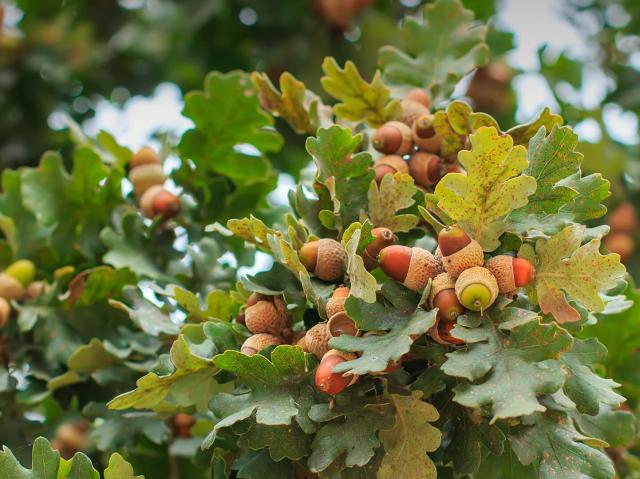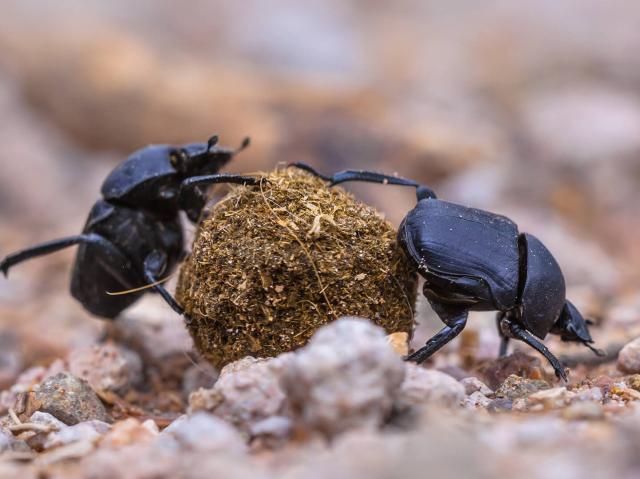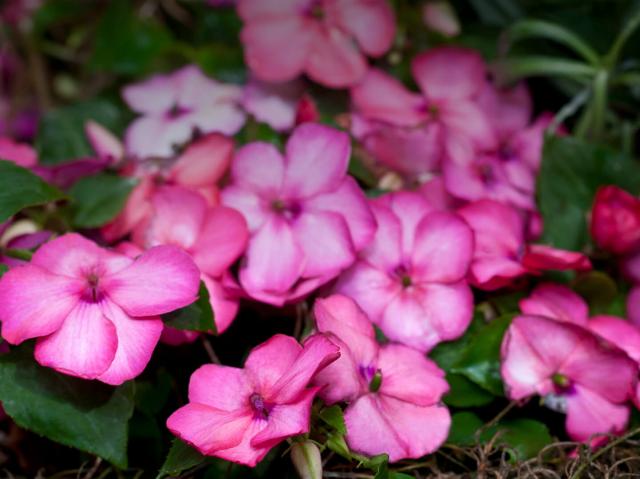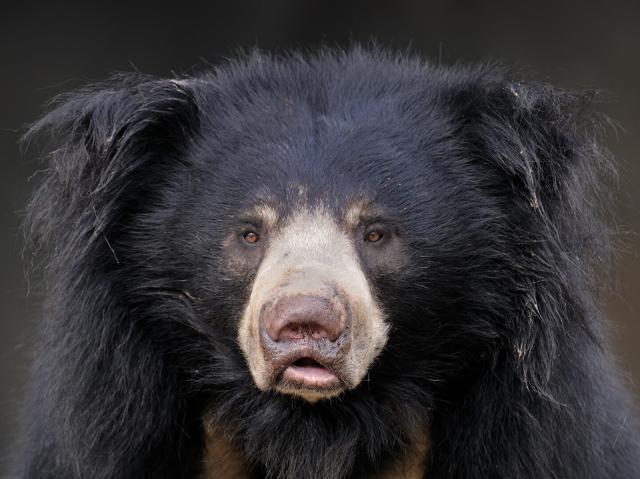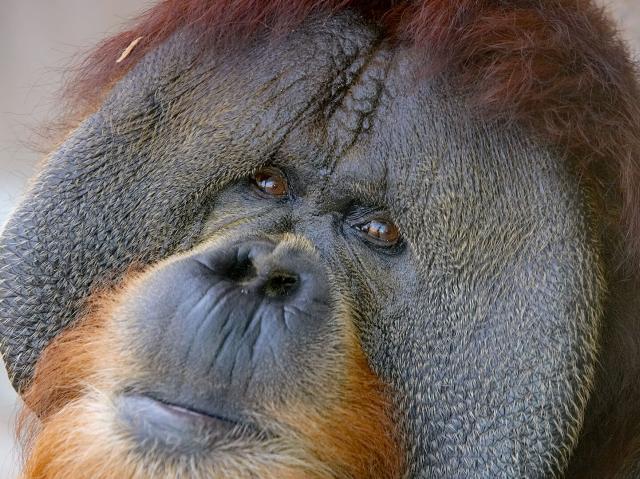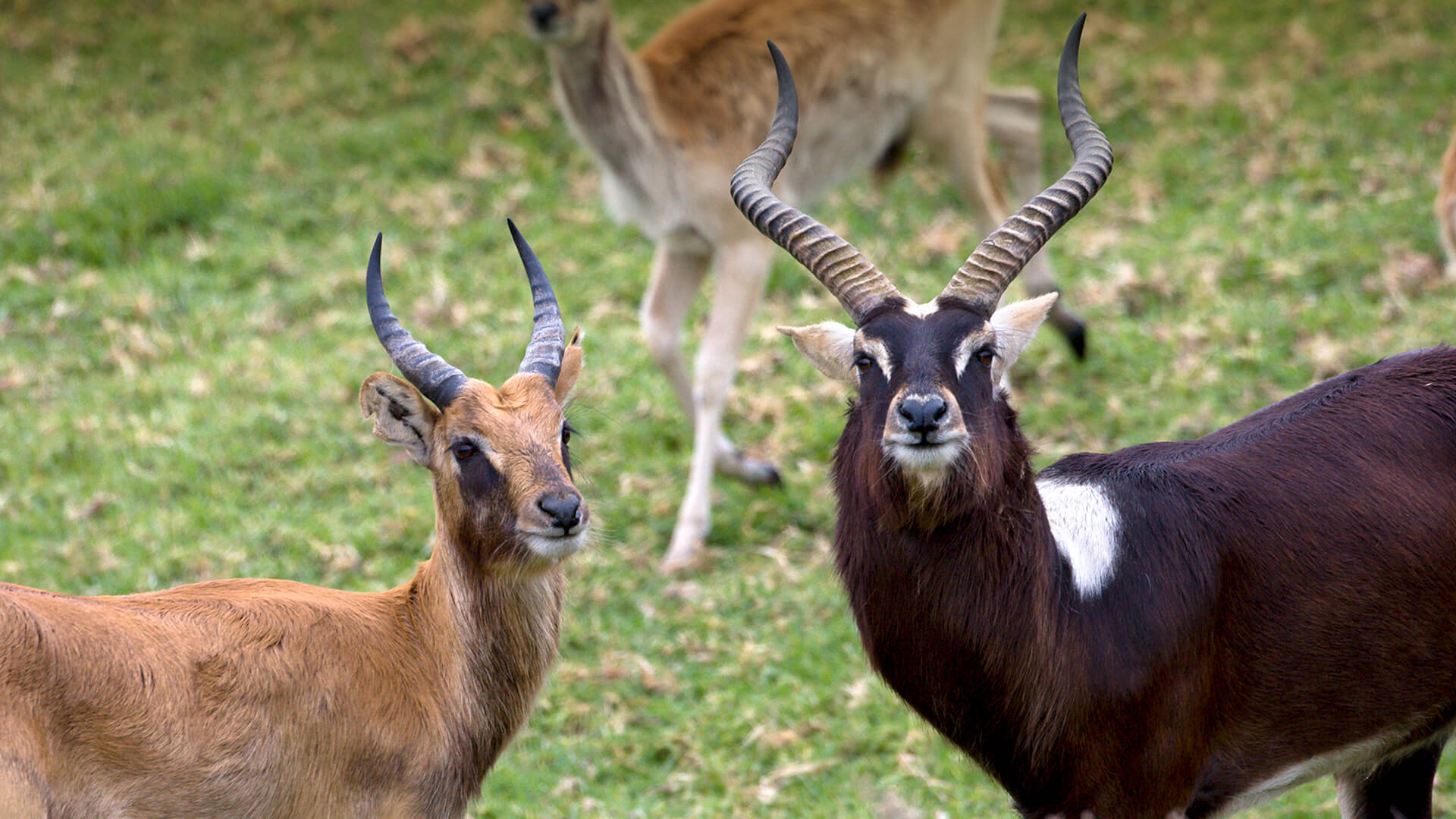
Nile Lechwe

- CLASS: Mammalia (Mammals)
- ORDER: Artiodactyla
- FAMILY: Bovidae
- GENUS: Kobus
- SPECIES: megaceros

ABOUT
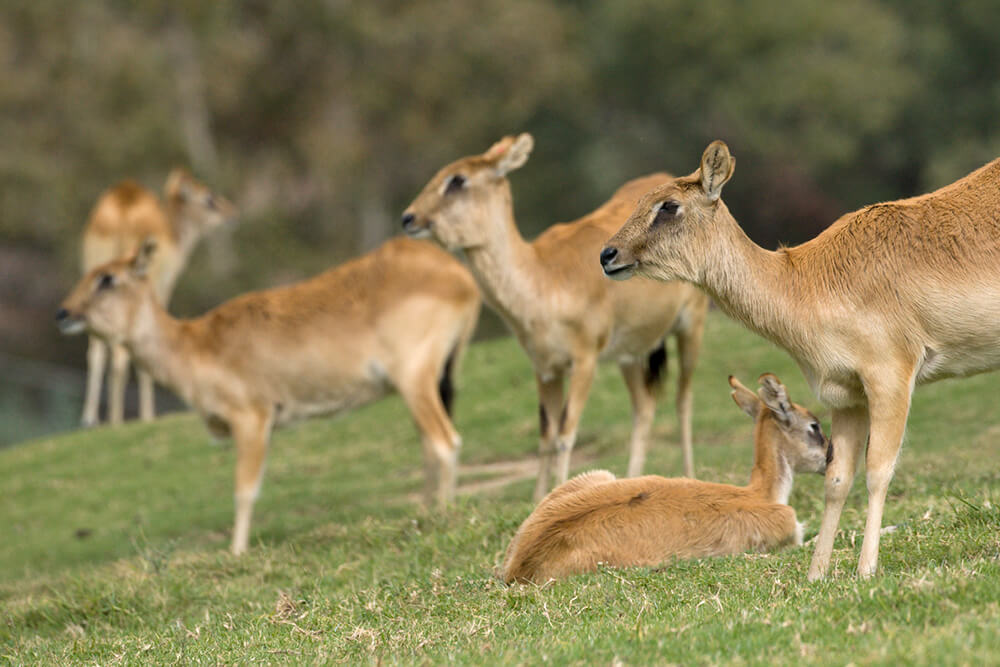
Nile what? Most people in this part of the world have never heard of a Nile lechwe (pronounced LETCH-way or LEECH-wee). Nile lechwe are native to the floodplains of the Nile River Valley. Most of the population lives in southern Sudan, with the remaining in western Ethiopia. The "Nile" part of their name tells you where they are from, but where in the world does the word "lechwe" come from? Lechwe is a Bantu word meaning antelope, a good name for the antelope calling the Nile River Valley home.
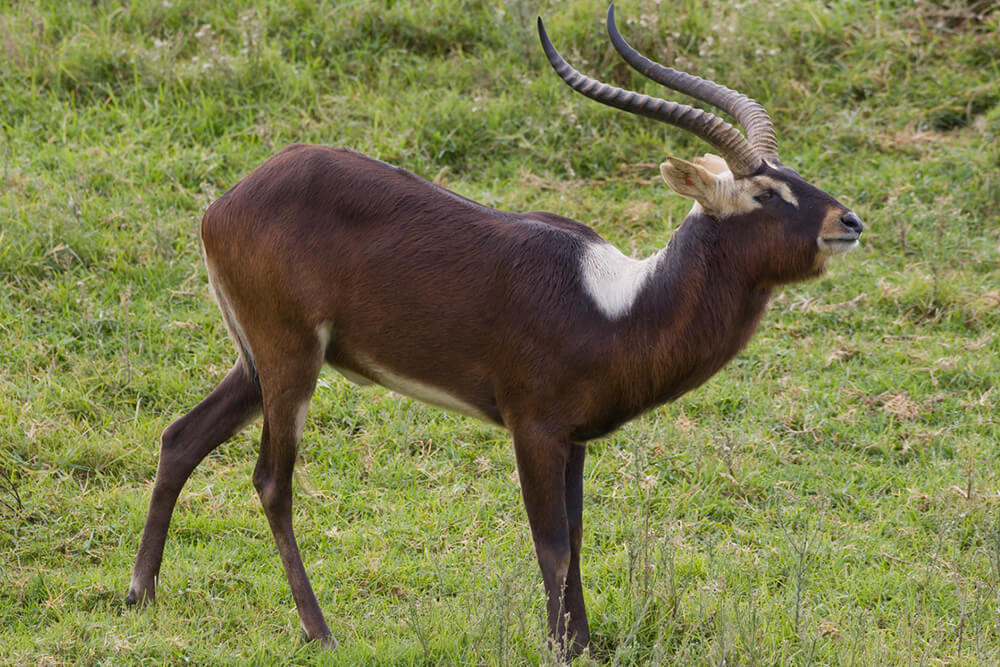
When it comes to dressing to impress, Nile lechwe take the cake. Males and females are the same color when born, but as they mature, males change color and get much bigger. This difference in color and size within the same species is called sexual dimorphism. Males change from the blond coloring they are born with into a dark, chocolate brown with a blazing white patch on their shoulders as adults. But it isn’t just the females that take notice. It seems the flashy coat of the adult males denotes their status to other males, too.
On the open savanna, an adult male with this coloration would be an easy lunch for a lion. Yet in the dense vegetation provided by the swamps of the Nile, even a dark, handsome male Nile lechwe is camouflaged.
SaveSave
HABITAT AND DIET
Living in an ecosystem with seasonal flooding, Nile lechwe have adapted to become aquatic antelope; they dine on grasses and other vegetation in their marshy native habitat, and they are excellent swimmers. One of the most obvious physical adaptations to their watery environment is their long hooves. Compared to other antelope that prefer dry land, Nile lechwe have longer, more slender hooves. These hooves help them walk or run through their swampy, muddy home. While these long hooves are helpful for moving through the water, on dry land Nile lechwe tend to look clumsy. Male Nile lechwe also go to the water to fight, often submerging their locked heads.
FAMILY LIFE
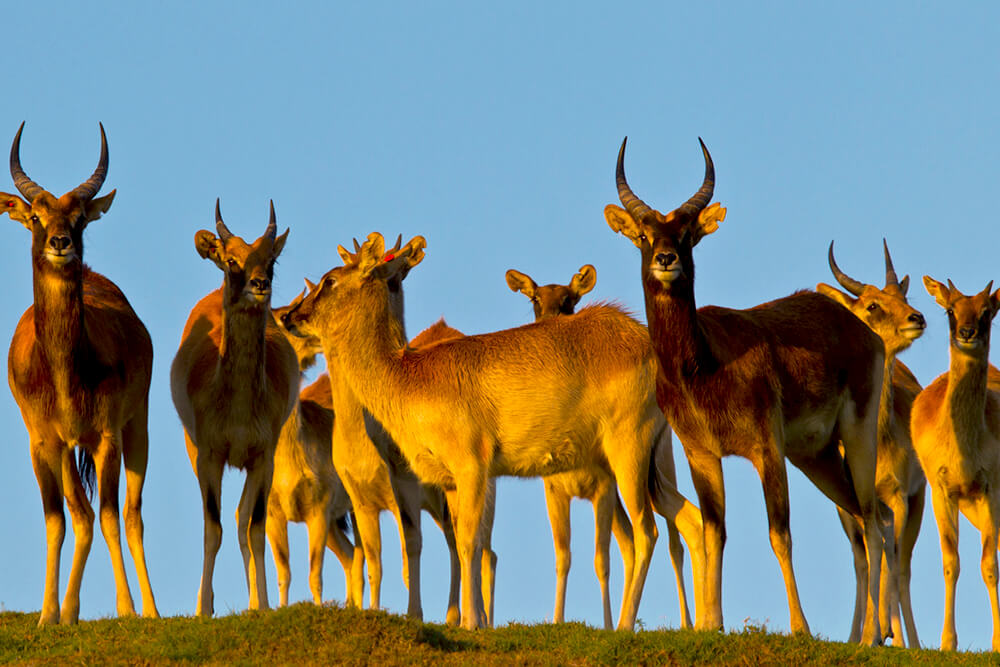
Herd size for Nile lechwe can be from 50 to hundreds of individuals, depending on how much space is available. Both male and female Nile lechwe are social, with males often teaming up to chase other males away from the herd. Adult male Nile lechwe mark the shaggy “beard” running down their neck with urine. This declares their status to other males and females. It takes the male a lot of practice to mark himself in this unique way!
A female may bear a single calf between November and January. She hides her baby in a protected area away from the herd for its first two weeks and defends her calf if other herd members come near. By five to six months of age, the youngster is weaned, and the mother is ready for her next male suitor.
Antelope are not thought of as “talkative.” Yet Nile lechwe, like many other antelopes, produce vocalizations. Females often make a noise sounding like the combination of a frog's croak and a pig's snort. They also make a call directed just to their calf, and the calf has a special call they use to respond. Males produce a call somewhat like the female vocalization but with a bit more “snort” to it. This vocalization is often directed at other males during social interactions.
CONSERVATION
Nile lechwe are endangered. The last population count was in 1983. At that time the total number of individuals was between 30,000 and 40,000. Since the 1980s, the people Nile lechwe share habitat with have been in a state of turmoil. Cultural instability, the increasing use of firearms, and encroaching livestock grazing have all harmed Nile lechwe habitat and populations. The most threatening is a hydroelectric dam built south of their native floodplains in Sudan. It will likely disturb the seasonal flooding that Nile lechwe and many other wildlife rely on.
By supporting San Diego Zoo Wildlife Alliance, you are our ally in saving and protecting wildlife worldwide.
LIFE SPAN
Nile lechwe living in the care of humans have a median life expectancy of about 9 years.
YOUNG
Gestation: About 8 months
Number of young at birth: 1
Weight at birth: Females average 12 pounds (5.6 kilograms); males average 14 pounds (6.4 kilograms)
Age of maturity: Females, 1.5 years; males, 3 years
SIZE
Length: Females 4.2 to 5.6 feet (130 to 170 centimeters); males 5.2 to 5.9 feet (160 to 180 centimeters)
Height: Females 2.6 to 2.8 feet (80 to 85 centimeters); males 3.2 to 3.4 feet (100 to 105 centimeters) tall at the shoulder
Weight: Females 132 to 198 pounds (60 to 90 kilograms); males 198 to 265 pounds (90 to 120 kilograms)
FUN FACTS
The Nile lechwe was originally named Mrs. Gray’s waterbuck by Dr. J. E. Gray, a curator at the British Museum, in honor of his wife.



